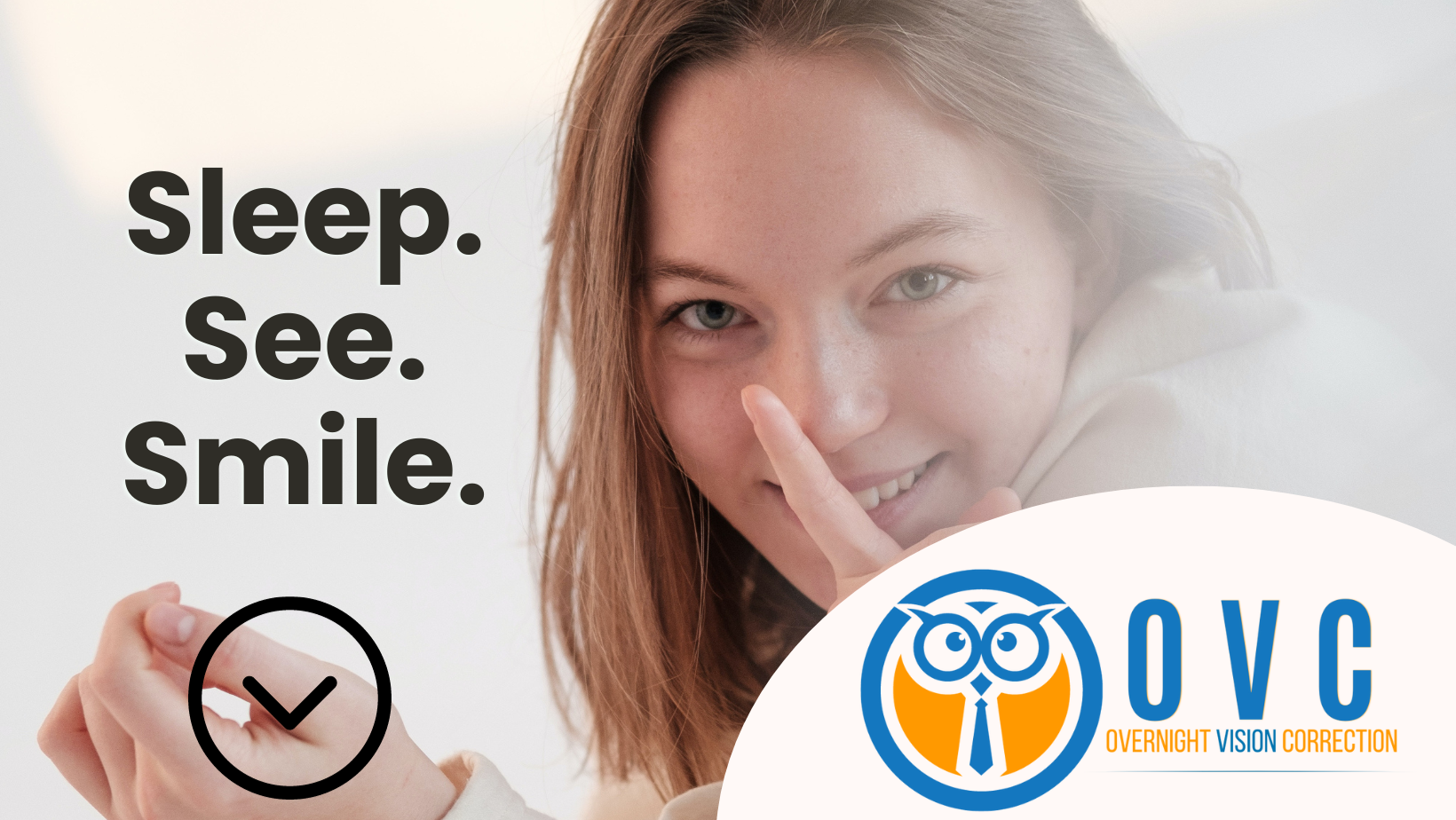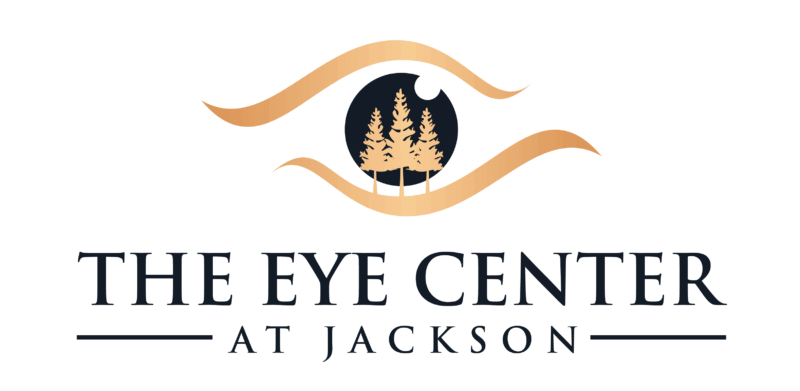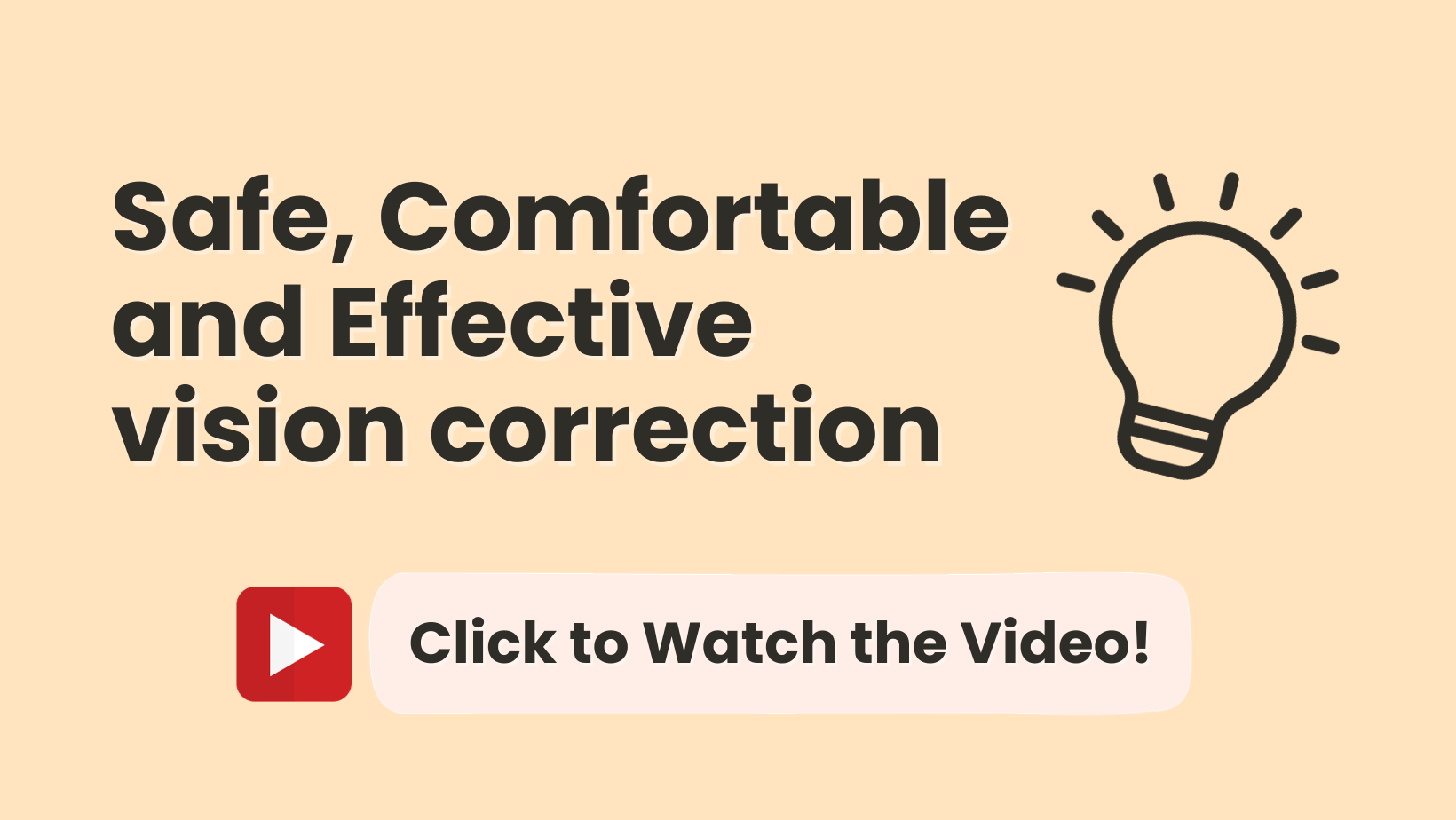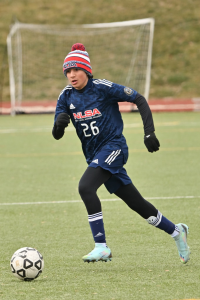
 Ortho-k is a special type of rigid contact lens which is worn overnight, while sleeping, to gently reshape the cornea (the clear dome at the front of the eye). The cornea acts like a lens for the eye, with the corneal shape changes made by ortho-k in effect increasing or decreasing its focusing power.
Ortho-k is a special type of rigid contact lens which is worn overnight, while sleeping, to gently reshape the cornea (the clear dome at the front of the eye). The cornea acts like a lens for the eye, with the corneal shape changes made by ortho-k in effect increasing or decreasing its focusing power.
On waking, the ortho-k lenses are removed where the change in focusing power they make to the cornea provides the same effect as wearing glasses or daytime contact lenses. When fit correctly, ortho-k overcomes the need for daytime glasses or contact lenses.
Lens wear needs to be continued each night to maintain the shape change that is made to the cornea, and for clear vision during the day.

Ortho-k lenses correct myopia by gently and temporarily flattening the cornea by a small amount that is matched to the amount of myopia to correct, with higher amounts of myopia needing more corneal flattening.
Flattening the cornea has the effect of reducing the focussing power of the cornea, and because myopia is in effect caused by the focussing power of the eye being too strong, this has the effect of neutralizing the myopia and bringing objects back into focus on the retina.
Ortho-k lenses are worn overnight, which is when the flattening effect takes place, and removed during the day with the now flattened corneal profile temporarily fixing the myopia and providing clear vision.

Ortho-k provides the freedom for your child to see clearly during waking hours without needing to wear any spectacles or contact lenses. This can bring the added benefit of allowing them to see clearly for school, sports and other recreational activities without glasses getting in the way.
Children from ages 6-14 have been shown to prefer wearing ortho-k to spectacles, rating their overall vision, appearance, ability to participate in activities and satisfaction as higher with ortho-k.
Compared to traditional daytime wear contact lenses, ortho-k offers the benefit of overnight lens wear, thereby bringing all lens wear inside the home environment and making it easier for parents to supervise all lens care and cleaning procedures.
Ortho-k lenses gently reshape the curvature of the eye overnight. The cornea plays a key role in creating a sharp, optical focus. Upon waking, the slight change in cornea curvature is enough to create clear, sharp vision for the duration of the day.
In addition it is believed that the refocusing of light on the peripheral retina can slow down the progression of short-sightedness in children.
Ortho-k has been in use in the UK since 2002, and is only ever fitted by an optical specialist. It is non-invasive, comfortable, effective and safe and has already transformed the lives of thousands of people.
What results can you expect from OVC?
The goal for OVC is to correct your vision to 20/20 without eyeglasses or contact lenses during the day. In FDA trials of OVC lenses, more than 65% of patients were able to achieve 20/20 visual acuity after wearing the reshaping lenses overnight. More than 90% were able to see 20/40 or better (the legal vision requirement for driving without glasses in most states).
Success rates for OVC tend to be higher for mild prescriptions. Call our office to find out if your prescription is within the range that can be successfully treated with OVC.
How long does OVC take?
- 1-2 days overnight for initial improvement.
- Several weeks for full vision correction.
- During this time, your vision will not be as clear as it was with glasses or contacts, and you are likely to notice some glare and halos around lights. It’s possible you may need a temporary pair of eyeglasses for certain tasks, like driving at night, until your vision is fully corrected by the OVC lenses.

Is OVC comfortable?
Ortho-k lenses, designed to reshape the eye for vision correction, are custom-made or closely matched to eye contours, minimizing discomfort. Initially, there may be a sensation similar to having dust in the eye, prompting tear production. However, this discomfort typically subsides over time, and users often find the lenses become as comfortable as if not felt at all. An analogy likens the adjustment period to breaking in a new pair of shoes that may be initially uncomfortable but eventually become comfortable with wear.
OVC is a significantly longer process than a regular contact lens fitting. It requires a series of office visits and potentially multiple pairs of lenses. Also, hard lenses used for OVC are more costly than most regular contact lenses. Therefore, fees for OKC are higher than fees for regular contact lens fittings. The one time fee is less expensive than LASIK and depends on the complexity of the cornea.
Can I have LASIK after OVC?
Yes, it's possible to have LASIK surgery after orthokeratology. But because OVC lenses reshape your cornea, you must stop wearing the lenses for a period of time (usually several months) so your eyes can return to their original shape and stabilize. Be sure to tell your LASIK surgeon that you've worn OVC lenses, so they can advise you how long you should wait before having the surgery.
Why Parents Love Overnight Vision Correction
OVC Lenses not only correct your eyesight. More importantly, they prevent your child's eyes from deteriorating. Therefore, their vision won't worsen and their eyes will be stable.
"I really like my OVC lenses, I've been wearing them for 6 months now and my vision is clear in school and I don't need my ugly sports goggles anymore."
- Michael – 12
Have more questions?
Refer to these educational links for further reading on OrthoKeratology.
https://www.isee.com/
https://www.ncbi.nlm.nih.gov/pmc/articles/PMC4697954/
http://www.aaojournal.org/article/S0161-6420(14)00931-2/abstract



